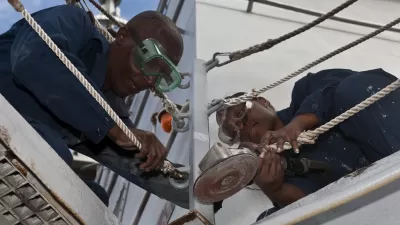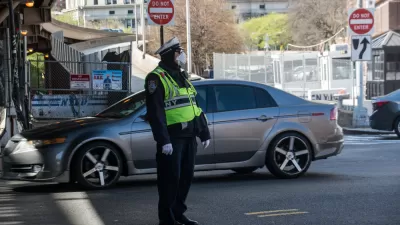The New York Times opinion section includes a call for society, politicians, and business leaders to recognize the importance of maintenance.

Andrew Russell, professor of history and the dean of arts and sciences at SUNY Polytechnic Institute, and Lee Vinsel, professor in the department of science and technology in society at Virginia Tech, take to the pages of the New York Times opinion section to make an appeal for shifting the focus of the infrastructure discussion.
The argument responds to the state of the nation's infrastructure—every variety of which, according to the article, is in "decrepit" condition. But, why?
Why are we in this predicament? One obvious answer is that officials in federal, state and local government do not allocate the resources necessary for preventive maintenance. But their inaction is a symptom of a deeper problem, one that is too seldom discussed: Americans have an impoverished and immature conception of technology, one that fetishizes innovation as a kind of art and demeans upkeep as mere drudgery.
The duo goes on to add: "Once you notice this problem — innovation is exalted, maintenance devalued — you begin to see it everywhere." The problem isn't just with the media or with industrial leaders like Elon Musk, the problem is also perpetuated by politicians, who would prefer new, splashy projects that the mundane business of maintenance. The article cites New York Mayor Bill de Blasio's proposal for the Brooklyn Queens Connector—a hotly-debated streetcar project in a city desperate for bus system improvements—as an example, but Elon Musk's plans for a system of tunnels under Los Angeles and New York Governor Andrew Cuomo's declaration of a state of emergency for the MTA subway system also provide plenty of evidence of those claims.
FULL STORY: Let’s Get Excited About Maintenance!

Maui's Vacation Rental Debate Turns Ugly
Verbal attacks, misinformation campaigns and fistfights plague a high-stakes debate to convert thousands of vacation rentals into long-term housing.

Planetizen Federal Action Tracker
A weekly monitor of how Trump’s orders and actions are impacting planners and planning in America.

In Urban Planning, AI Prompting Could be the New Design Thinking
Creativity has long been key to great urban design. What if we see AI as our new creative partner?

How Trump's HUD Budget Proposal Would Harm Homelessness Response
Experts say the change to the HUD budget would make it more difficult to identify people who are homeless and connect them with services, and to prevent homelessness.

The Vast Potential of the Right-of-Way
One writer argues that the space between two building faces is the most important element of the built environment.

Florida Seniors Face Rising Homelessness Risk
High housing costs are pushing more seniors, many of them on a fixed income, into homelessness.
Urban Design for Planners 1: Software Tools
This six-course series explores essential urban design concepts using open source software and equips planners with the tools they need to participate fully in the urban design process.
Planning for Universal Design
Learn the tools for implementing Universal Design in planning regulations.
Gallatin County Department of Planning & Community Development
Heyer Gruel & Associates PA
JM Goldson LLC
City of Camden Redevelopment Agency
City of Astoria
Transportation Research & Education Center (TREC) at Portland State University
Jefferson Parish Government
Camden Redevelopment Agency
City of Claremont





























